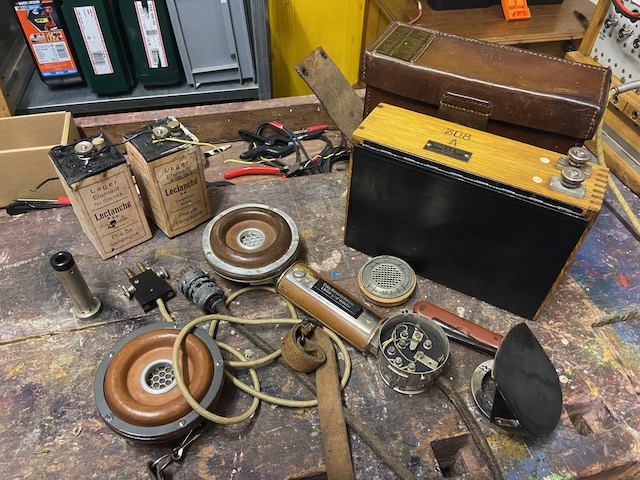
Find more details on Swiss field telephone history on the Swiss Army Field Telephones Timeline.
The Swiss Army field phone Zerlegbares Telephon (Take-apart Telephone, in some literature also named Artillerie-Telephon zerlegbar) was developed by Hasler AG (One of the predecessors to Ascom) in 1915. It's design was based on the single boxed (wood) Artillerie-Telephon (Art Tf) from the same years developed and manufactured by Siemens & Halske. It is assumed that the Swiss Army or Siemens licensed the design to Hasler. At that time the Swiss Army had already two Siemens & Halske field-phones in operation, about 1500 pieces of the aforementioned Artillerie-Telephon (Art Tf) 1915, and about 2000 pieces of the leather backpack based Feldtelefon (F Tf) 1909, all using the same basic setup with a buzzer for signalling and the same handset and headset. From 1915 to 1917 about 500 pcs. of the Zerlegbares Telephon were delivered to the Swiss field artillery forces.
In comparison to the F Tf 1909 (~9kg) and the Art Tf 1915 (~7kg) the Zerlegbares Telephon is better suited for transport due to the relatively compact sizes of it's individual parts and it's lower weight (less than 6kg). The instrument can only be used with buzzer signalling either point to point to other instruments (also with signalling whistle) or to switchboard equipment with buzzer compatible call indicators.
The handset is identical to the above mentioned other Swiss Army instruments. It's a Siemens & Halske standard design also used on other instruments, e.g. the Fernsprechstation M 10/16 which Siemens & Halske delivered to Austro-Hungary. The electromagnetic receiver is fix built into an aluminum housing, the front is leather covered. The transmitter uses a replaceable carbon-granule element and a folding funnel. The handset handle contains the P.T.T. and the buzzer button. A 6 leaded cord ends in a special 6 pin male connector.
The headset is basically the same design as the handset receiver side, but using a steel housing instead of aluminum. A leather head-strap is connected to the headset. It is very similar to the Eiserner Kopffernhörer 1913 used in Germany at the time. The headset plug has two screwable connectors allowing to connect directly to the line. Together with the signalling whistle (Reed pipe, Ruftrompete, Signalhörnchen) the headset could be used as a very compact and lightweight transmitter and receiver for line installation and troubleshooting.
The main body contains the battery compartment and the buzzer, capacitor and coil inside a hardwood frame with sheet metal lids. The battery compartment holds two 1,5V Feld-/Lagerelement type batteries. These elements were imported from Germany until 1922 when Leclanché in Yverdon started production of a Swiss made element which was made until the 1990ies. The capacitor block houses two capacitors, 1x 1,5uF to block DC from the line and 1x 0,5uF for the buzzer spark suppression. The coil is a basic primary 0,8 Ohm/secondary 200 Ohm setup, standard values for local battery setups of that era (Identical to e.g. the german OB 05). The buzzer is what is called for Swiss Army phones of that era the Siemens-Summer (vs. the Englischer Summer and the Albis-Summer I will describe for other phones). It is uses a electromechanical contact breaker setup. For basic tuning a screwdriver and a small wrench is required. The small wrench is held inside the instrument in a small leather pouch. The fine tuning control wheel can be adjusted without tools.
Transportable in three small parts. The main box with the batteries and the buzzer and coil, in a leather box. The Handset and the Headset in their own leather pouches.
Partly disassembled.

Ready to use.
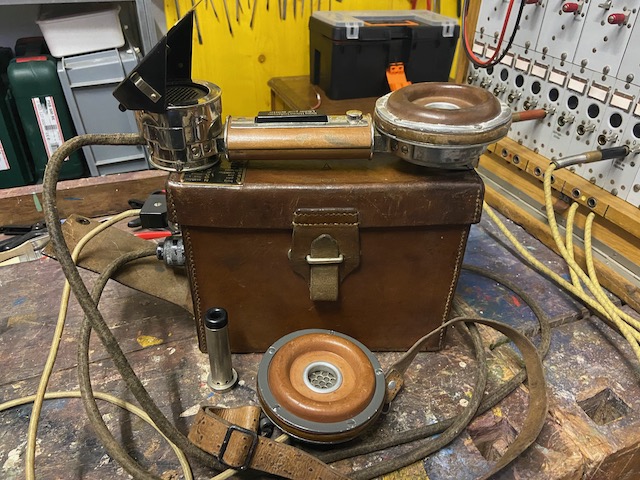
Ready to pack.
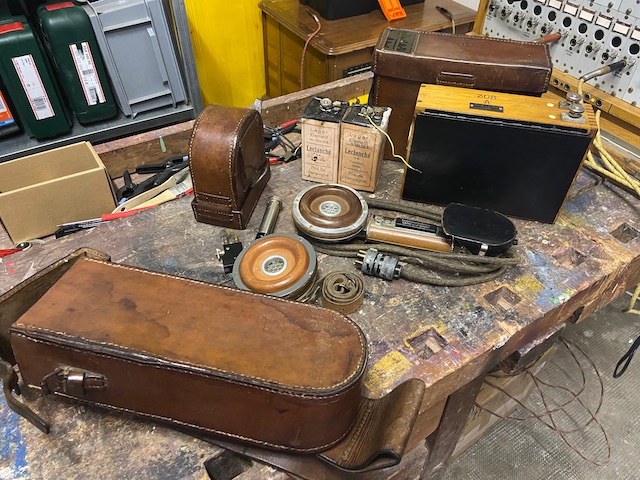
Ready for transport.
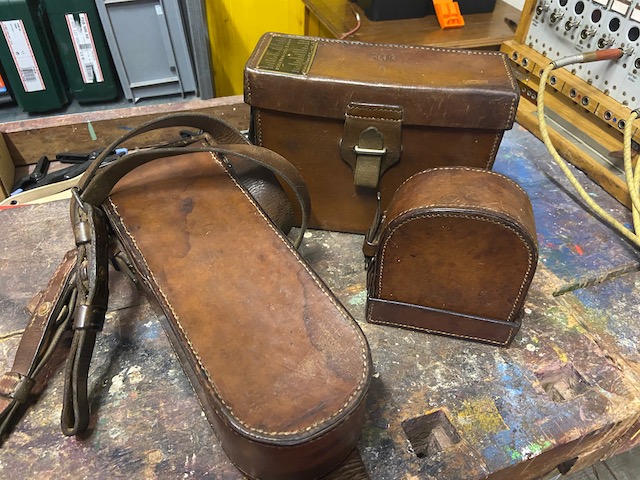
Wirign and electrical diagram.
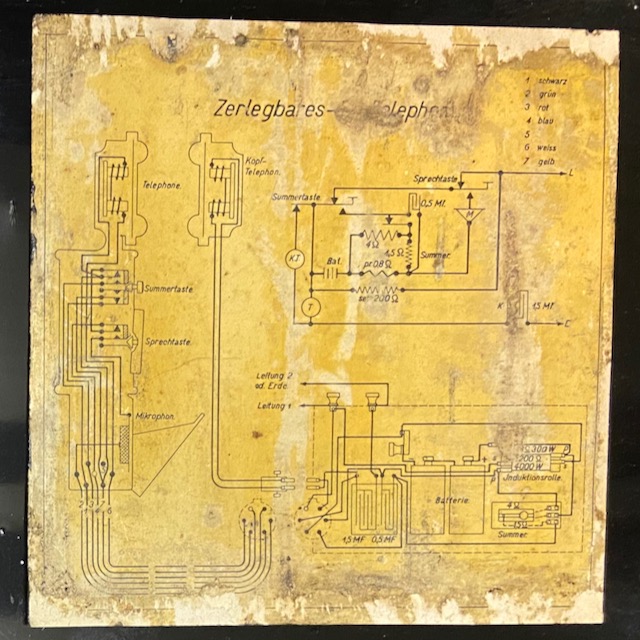
The diagram is mounted inside one of the box lids.
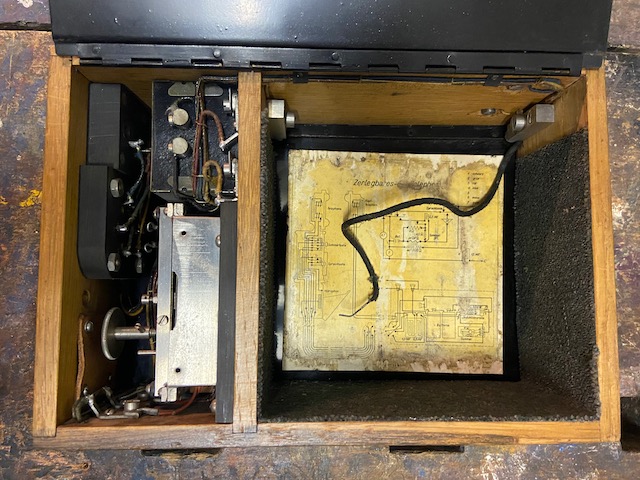
The main box with lids closed. On top the serial number and the line connectors labeled L (Line) and E (Earth).
On the right edge the acceptance stamp.
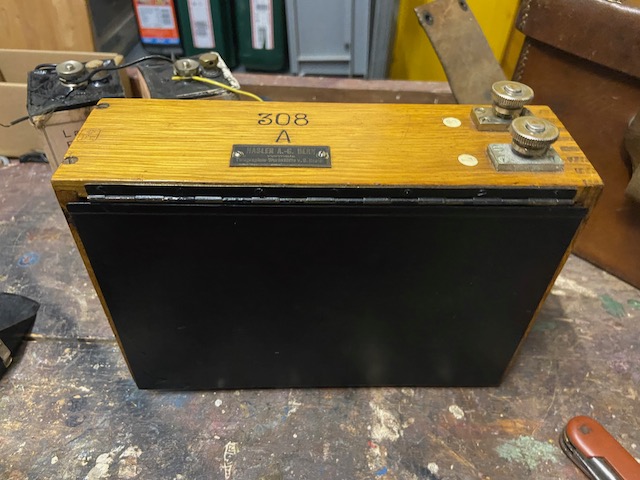
The main box with lids open. On the right the battery box lined with a thin felt.
On the left the electromechanical parts: top left the sockets, top right the capacitor connector side, bottom right the buzzer (Siemens-Summer).
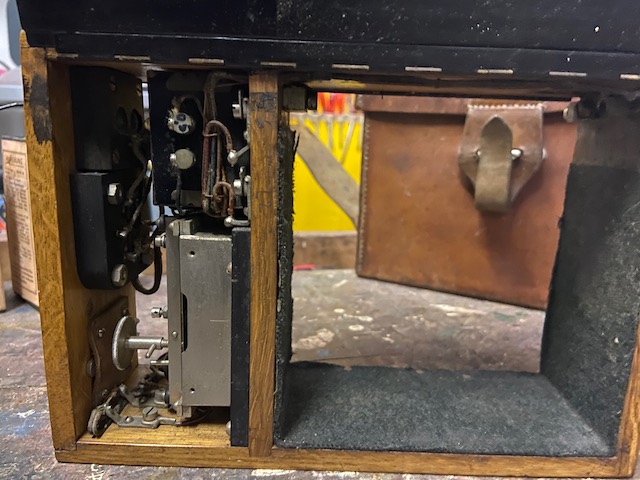
Other side of the main box with lids open.
At the top edge of the battery box the battery connectors, right +, left -.
On the right the electromechanical parts: top the capacitor bottom side, below that the coil, to the right the buzzer tuning wrench in it's leather pouch.
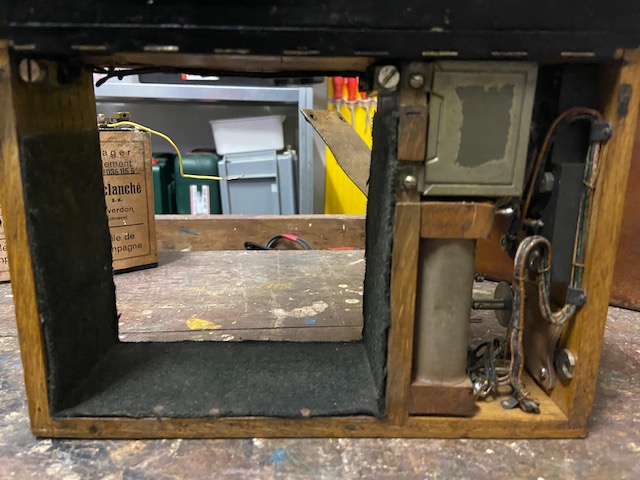
The serial number #308, phone type A (Artillery) and manufacturer label (Hasler A.-G. Bern vormals Telegraphen-Werkstätte v. G. Hasler).
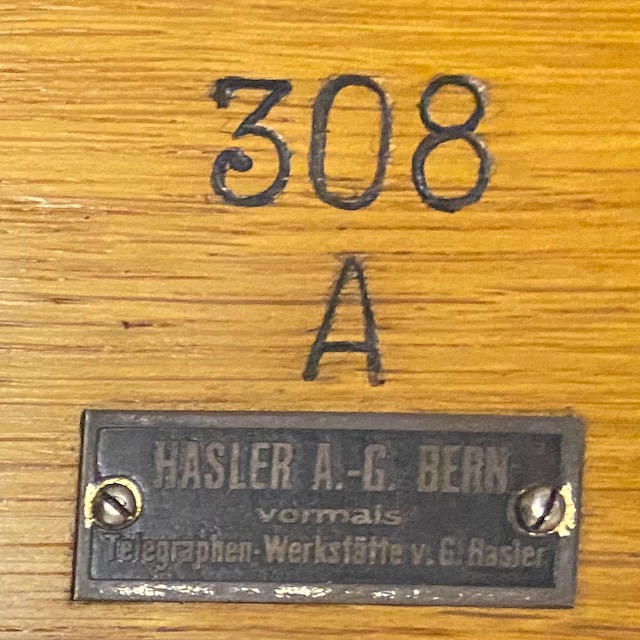
The main box stored inside it's leather cover.
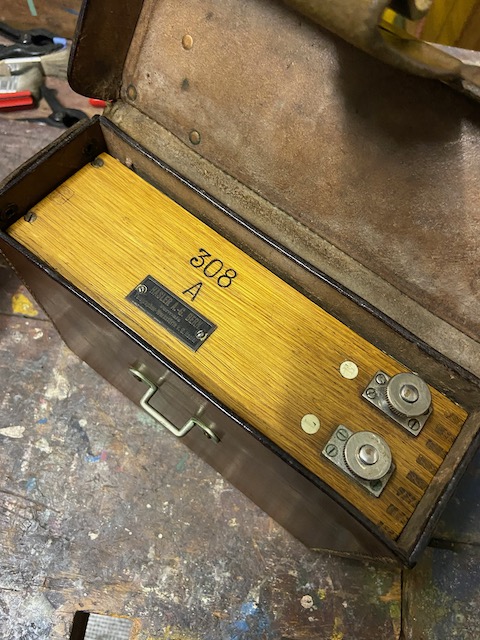
The main box cover closed.
The serial number #308 and phone type A (Artillery).
On the right the spelling alphabet.

The spelling alphabet.
This swiss military spelling alphabet was based on swiss location names, in use until the end of the 40ies.
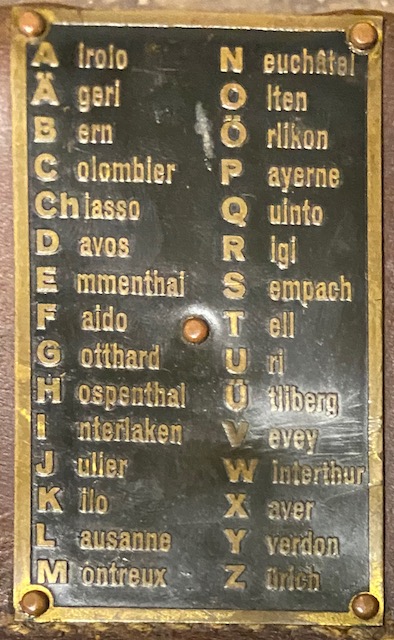
The handset with the transmitter removed.
On the handle the P.T.T. lever and the buzzer button.
The receiver cap is covered with a leather front.
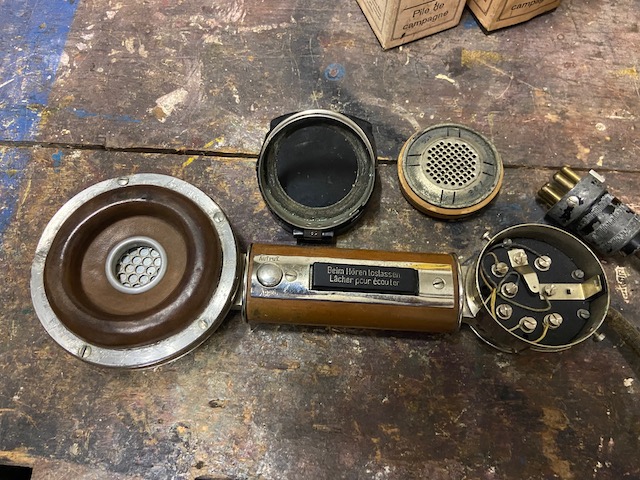
The TX element front.
The top stamp may designate the year of make, 1928.
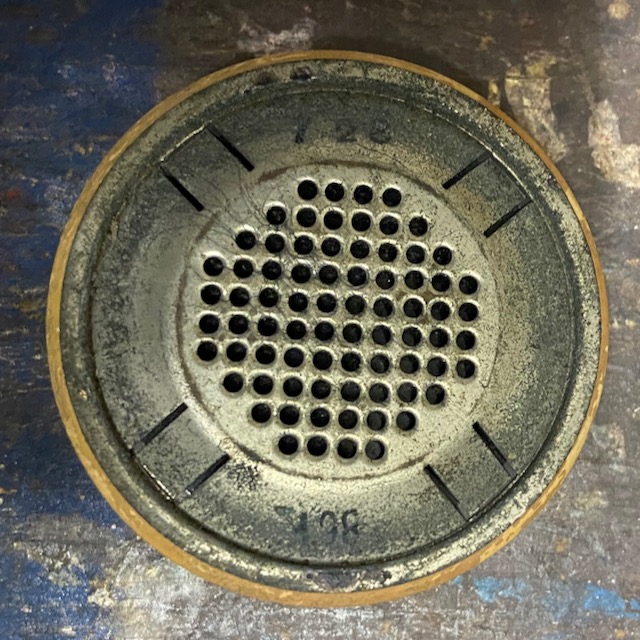
The TX element back.
It's siemens made, part#: F.mph.71a
D.R.G.M = Deutsches Reichs-Gebrauchsmuster (The german utility model type of IP protection used until 1945).
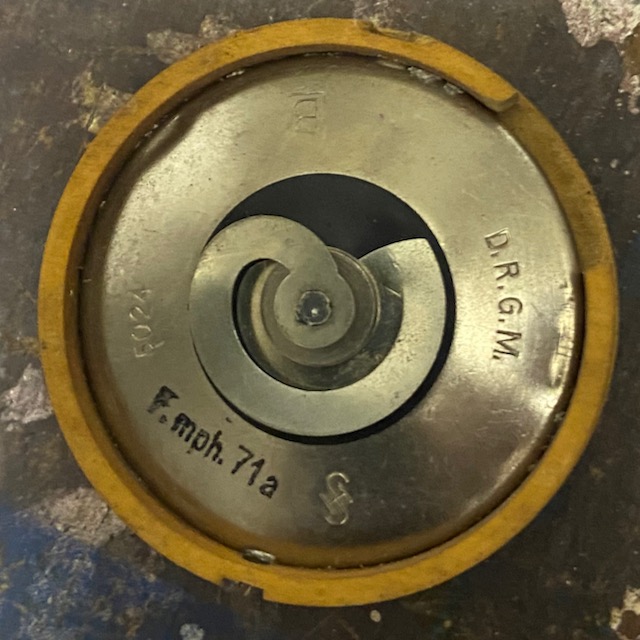
The Hasler logo (GH for Gustav Hasler) on the handset receiver rim.
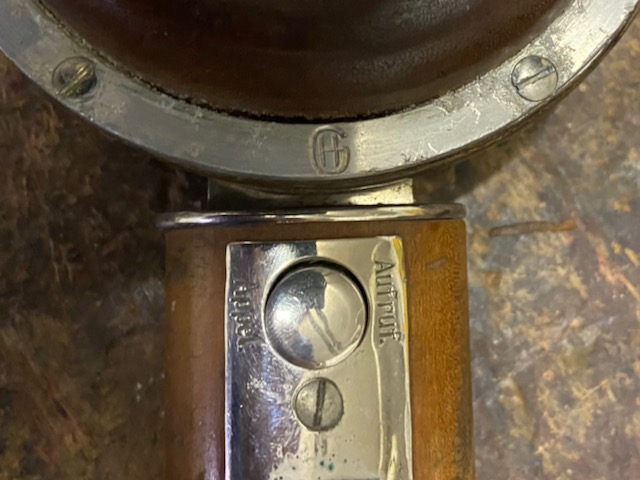
The handset six pin plug and socket.
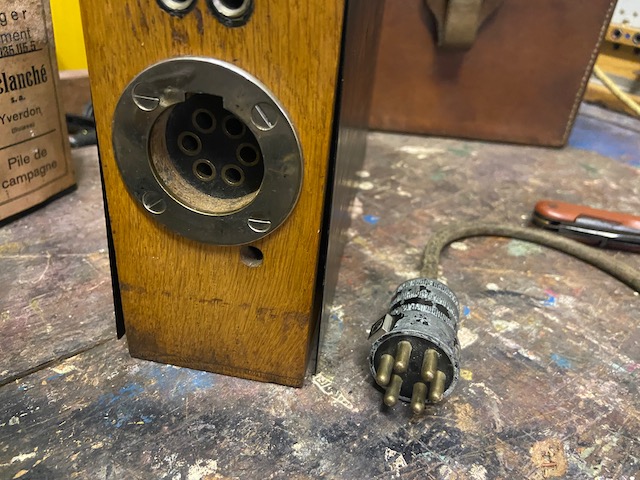
The handset stored in the pouch.
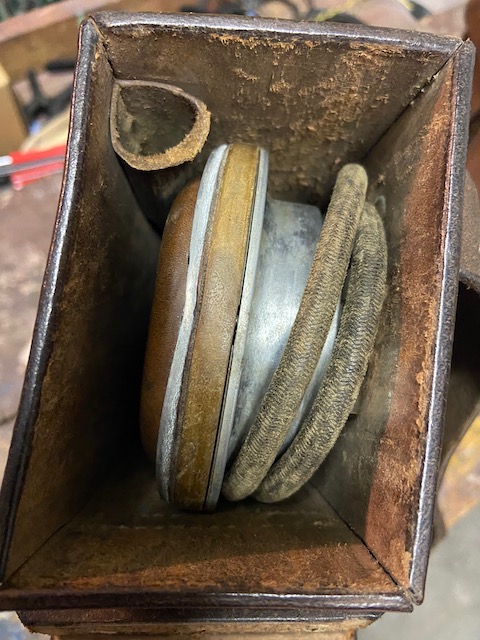
The headset front, with the signal whistle.
The signal whistle fits exactly into the headset opening.
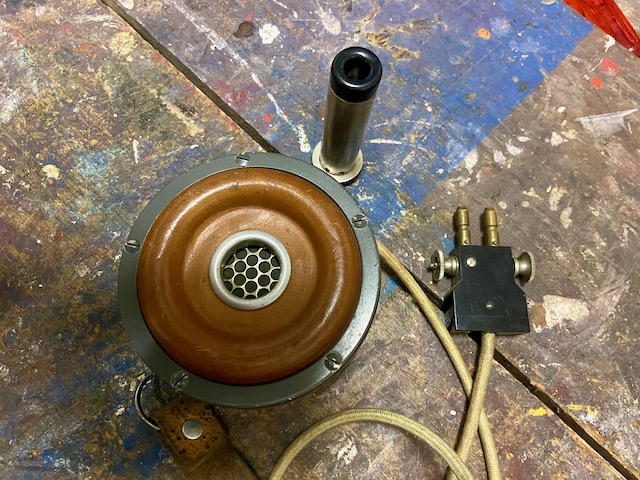
The headset back.
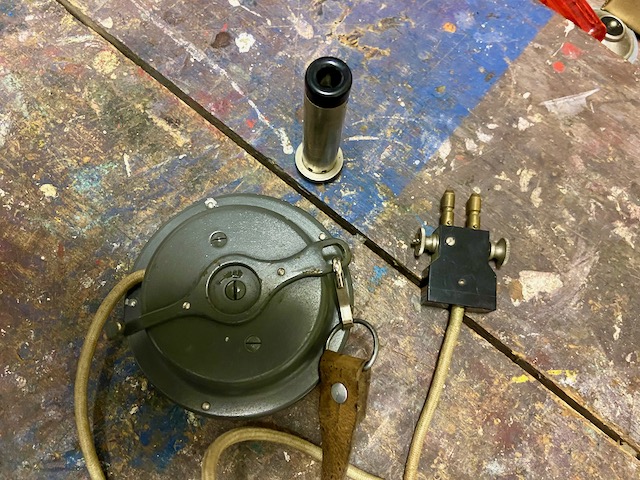
The headset stored in the pouch.
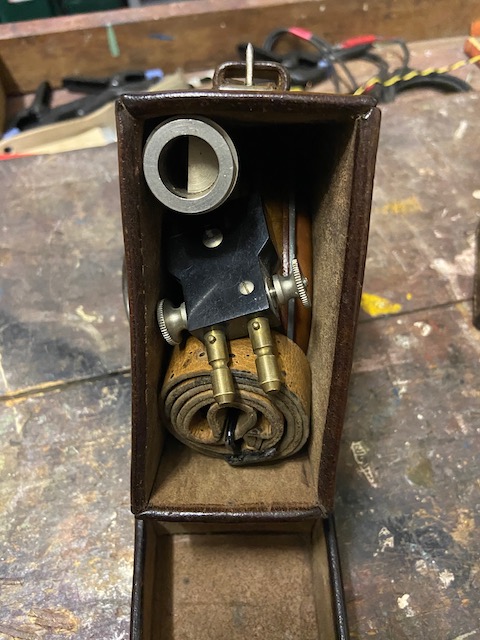
The buzzer wrench in it's pouch.

The buzzer wrench in action.
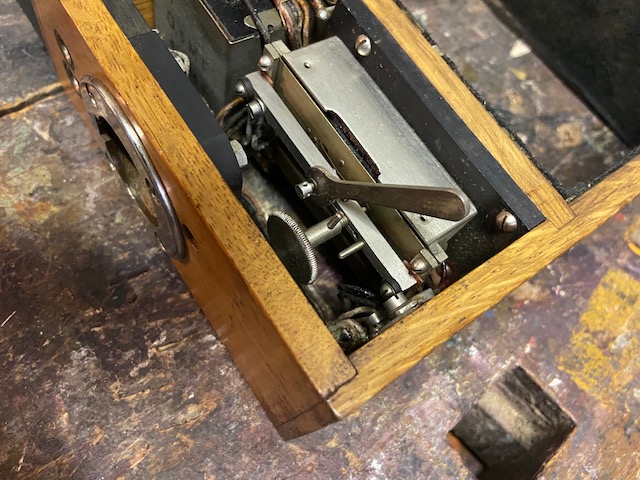
Creative Commons Attribution-ShareAlike 4.0 International License